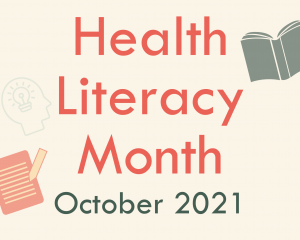Where Health Literacy Meets Inclusion
Posted on by
October is Health Literacy Month, and this year CDC and NIOSH are celebrating with the theme “Health Literacy and Health Equity: Advancing Diversity, Accessibility, and Inclusion.” Within this title, there is a lot we can unpack. So, let’s break it down and see how all these ideas can interact to improve health communications and materials.
- Health Literacy
- Personal health literacy is the degree to which individuals can find, understand, and use information and services to inform health-related decisions and actions for themselves and others. [1]
- Organizational health literacy is the degree to which organizations equitably help individuals to find, understand, and use information and services to inform health-related decisions and actions for themselves and others. [1]
- Health Equity is when everyone has the opportunity to be as healthy as possible. [2]
- Diversity is being composed of differing elements, especially the inclusion of people of different races, cultures, etc. in a group or organization. [3]
- Something accessible is capable of being
- reached/within reach
- used or seen
- understood or appreciated
- easily used or accessed by people with disabilities; adapted for use by people with disabilities [4]
- Inclusion is the act or practice of including and accommodating people who have historically been excluded (as because of their race, gender, sexuality, or ability). [5]
How these Concepts Relate
These definitions together start to paint a picture of how these ideas all interact. For example, achieving health equity requires making workplace safety and health accessible to all workers. If we are to achieve organizational health literacy, it means making our materials accessible, considering our diverse audience, and making sure that we include everyone.
Why it Matters
Prioritizing these elements as we communicate can reframe how we look at health literacy. Last year, we covered the importance of plain language and clear communication. This year, as we keep these core tenets in mind, we consider how we can address everyone inclusively and respectfully. Learn more about communicating in a more inclusive way through the resources listed below. Then, consider creating a Health Literacy Plan for your own organization.
More information is available on the Center for Disease Control and Prevention webpages
- Health Literacy
- Health Equity
- Health Literacy Training
- Health Equity Guiding Principles for Inclusive Communication
- Communicating with and About People with Disabilities
Tell us how do you or your organization work to incorporate diversity, accessibility, and inclusion into your communication below!
Sarah Mitchell, MPH, is a NIOSH Health Communication Fellow
References
Posted on by

